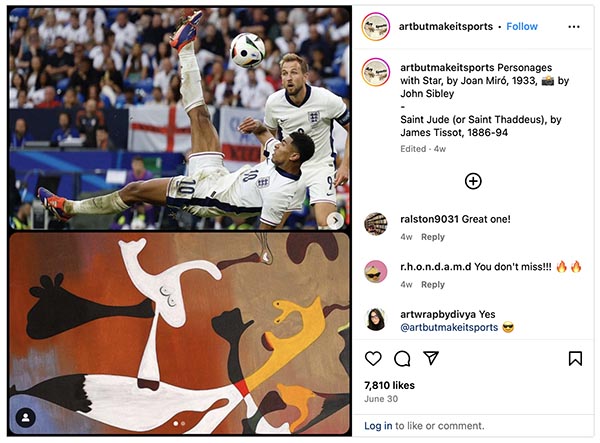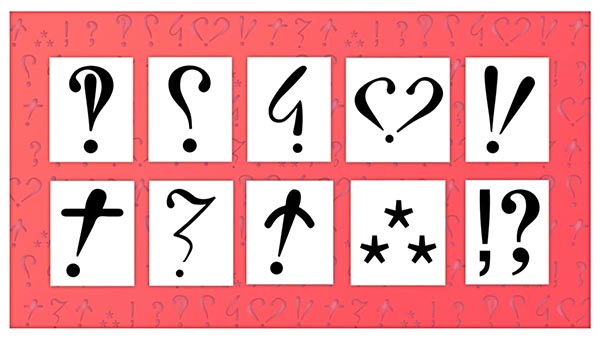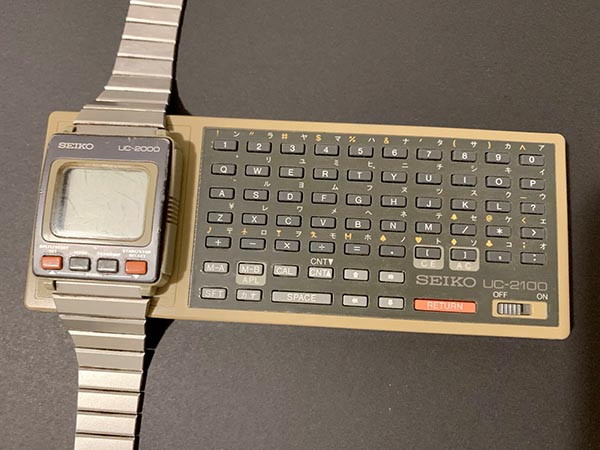
Branded City
If you have been watching the Summer Olympics (we have not, but find it amusing that Simone Biles could literally jump over Shaquille O’Neal) you may have noticed that an important part of setting the stage for the event was in the “branding” of the city of Paris. Via Print magazine, an op-ed by Alex Lampe, strategy and innovation director of brand and business consultancy Wiedemann Lampe, explains how cities brand themselves—or create a unique identity that captures both its history, its present, and its overall culture. Ultimately, how is a city perceived, and how do you change that perception in a positive way?
A strong city brand tunes into a place’s needs and ideas and designs a way forward that informs decision-making. It inspires community and business-led projects that support that vision. It can unite and motivate multiple organisations, disciplines, and stakeholders through a compelling idea with the power to transform a city’s fate.
Singapore is one of the most impressive examples of this in its ambition to become “the world’s greenest city.” The city opted for long-term planning over short-term economic goals to respond to the challenge of pollution. It removed the rubbish, educated people, and implemented laws into the planning system to ensure longevity (sustainable building practices have been mandatory since 2008). Crucially, it inspired and educated its citizens so that if ever there is a change in direction from developer or government, there are enough informed voices to advocate conservation.
The Singapore example also highlights a key challenge in creating a city brand: articulating a place’s uniqueness must be embraced by everyone. If it fails to engage your diverse audiences or misrepresents the place, if it comes across as a mere government or council initiative, or if it’s done in isolation, the result can be a lack of buy-in, criticism, or even the withdrawal of the campaign.
At the end of the day:
For a city brand to last, you need to decode the DNA of a place—the historical context, attitudes, and behaviours of its people, past and present. You can only do this by engaging with locals to understand the dynamics and subcultures at play. How do the dynamics inform what you see on the street? What is the language they use? Where do they go, and how do they interact?
Print Au Naturel
Do you like nature printing? Do you even know what nature printing is? Either way, Atlas Obscura is offering a two-part nature printing workshop.
In this mixed-media workshop, join artist and plant enthusiast Latifat Apatira to learn a centuries-old printmaking technique that combines plant-pressing, botanical printing, and hand coloring. We’ll briefly look at the history of nature printing as a functional tool for botanists, explorers, physicians, and apothecaries dating back to the 16th century. After a printing demonstration, participants will experiment with creating hand-pressed compositions with ink and paper, using fresh flowers and foliage found in their own neighborhoods. Finally, we’ll move on to the last phase: hand-coloring our prints with watercolor paints.

Tickets are on sale now.
Button Hold
Here’s an interesting free application, if you’re an obsessive collector of…website buttons? Yes, website buttons. Via Boing Boing, “Button Stealer” is a Chrome extension that copies a button from every website you visit and saves it to a collection.

As a bonus, the buttons in the collection are active. When you click on one, it takes you to the website it came from, as a sort of proof-of-provenance. Luckily, you can edit your button collection, which comes in handy if you frequent certain utilitarian websites you'd rather keep private.
What could be better than a random “Buy Now” button?
The Art of Sports—and Vice Versa
Do you like sports but struggle with an entry point into art? Or, conversely, are you an artist who can’t seem to get into sports? Help is on the way. Via Print magazine, a new project called “Art But Make It Sports” aims to bridge the gap.
The project is the brainchild of LJ Rader, a guy in New York City who works for a sports data and technology company and happens to have an uncanny ability to recall works of art that are reminiscent of moments in modern-day sporting events. Rader posts these side-by-side frames on Instagram and X, and has also launched a Substack.


Too often the art-sports binary rears its ugly head, but Rader’s gifted eye reveals that there’s much more connection between the two than we might think.
Punctual
Do ever find yourself wishing you had more punctuation marks? No, nor do we, but some people do, and to help them out, Mental Floss identifies some obscure, boutique punctuation marks you could be using.

You probably already know of the “interrobang” (top left), a combination question mark and exclamation mark, used to convey “incredulity.”
British philosopher John Wilkins originally suggested an “irony mark” or, essentially, an upside-down exclamation mark. But Alcanter de Brahm introduced his own irony mark (top row, third from left), and he was not the last. Is it ironic that someone would need a punctuation mark to indicate that something was ironic?
Want to indicate that you are saying something about which you have unshakeable certainty? Then use a “certitude point” (bottom left), which would be preferable to all caps.
At any rate, it would be difficulty to use these on modern keyboards and haven’t emojis covered most of these bases anyway?
Graphene Gets Fuzzy
Was it a good week for graphene news? It’s always a good week for graphene news! Using “fuzzy graphene” to promote a carbon-neutral economy. From (who else?) Graphene-Info:
Researchers from the University of North Carolina at Chapel Hill, Carnegie Mellon University, North Carolina State University and Yale University have developed a novel method to enhance the efficiency and stability of solar-driven, carbon-dioxide reduction.
But “fuzzy”?
This new technique involves the use of “fuzzy” graphene to improve the performance of semiconductor-based photoelectrodes, which initialize electrochemical transformations following the absorption of light. The term fuzzy refers to a form of graphene that has a rough or irregular surface with a porous and three-dimensional (3D) structure, as opposed to smooth or flat layers, with enhanced properties like surface area, reactivity or adhesion to a silicon molecule, or substrate.
Ultimately:
Solar-driven carbon dioxide reduction mimics natural photosynthesis, where plants convert carbon dioxide and water into glucose and oxygen using sunlight.
“The benefits of solar-driven, carbon dioxide reduction include using abundant solar energy in the process,” said Tzahi Cohen-Karni, a co-author of the paper, “reducing atmospheric CO2 levels by converting it into useful products and creating fuels that can be used in place of fossil fuels, potentially reducing reliance on non-renewable energy sources.”
Legacywear
Do you like old technology? Be sure to check out Old Crap, a “museum of computer anatomy,” or as it explains, “Best photos and technical documentation of retro computers, TVs and digital watches.” Looking for technical documentation for an Apple IIc? They’ve got it. Looking for pictures—inside and out—and user manuals for an HP-01 digital watch?

They’ve got it.
If you like old tech, check it out.
Say “KO”
Speaking of old tech you may think your new Garmin smartwatch is the bee’s knees, but did you ever check out a Seiko UC-2000, a smartwatch from 1984? Well, via Boing Boing, it told the date and time, could be used as a stopwatch, and had an alarm clock feature—like other contemporary digital watches. But, what made it stand head and shoulders above the others was that it had a full keyboard (well, via a dock). Adds Namoki, a website that explains how to modify Seiko watches:
when coupled with the UC-2100 keyboard, it becomes the “Wrist Information System” that can store memos, keep your appointments scheduled, and act like a calculator. You can save up to 2 memos of 1000 characters each, hence the UC-2000 model name.

Although the term “bling” had mercifully not been around then, there was also a gold version:

A steal at $1,300 on eBay.
Even more details at Old Crap.
No Flies on Us
Do you like picnics, but find yourself constantly attacked by swarms of flies? Well, fight back with the ShooAway, a fly-repellent fan invented by Australian industrial designer Andrew Smith. Via Core77:
The dots you see on the blades aren’t aesthetic: “Our patented Holographmatic Repel Dots work as a spinning fly deterrent - the refracting light and movement is what flies hate and is the most effective way to shoo away flies!”

If you’re worried about losing a hand or finger, fear not.
The battery-powered fan blades are soft and will stop once they touch your hand. You can place the device directly over a plate of food and reach in with no worries.
The practical jokes practically write themselves.
The ShooAway is now sold globally. A steal at $30 for a two-pack (you can’t just buy one, it seems). But beware of knockoffs, which, oddly, are more expensive than the original.
Winding Up
Are you a runner? Do you have a problem with wind resistance slowing your pace? (Yeah, that’s the problem. Wind resistance.) But, if that is your problem, you can train with a special runner’s windshield to help eliminate it. Says Core77:
The Airshield, developed by researchers at ETH Zurich, is a very unusual training aid for runners. It's a Plexiglas screen attached to a go-cart equipped with LiDAR. As the runner sprints, a computer controls the go-cart's speed, keeping the runner just behind the Plexi bubble. (The driver of the go-cart only steers.)

That would have been great for running during COVID.
The idea is that the Airshield removes air resistance, allowing the runner to engage in what the researchers call “overspeed training,” which “enables athletes to reach competition speeds during training that are otherwise only possible with an increased adrenaline level.”
It’s a safe bet you’re not allowed to use this during an actual race.
Why a Duck?
Tired of the printing industry? Looking for a change of career? Perhaps “duckmaster” may become an opportunity. Via Atlas Obscura, the Peabody Hotel in Memphis, Tenn., is home to the “Peabody Marching Ducks.” A tradition that dates back to 1933, the hotel’s flock of ducks march from their palatial penthouse suite to the hotel lobby fountain. To help coordinate this daily ritual is the coveted role of the “duckmaster,” which is currently held by actor and historian Kenon Walker. Says Walker:
The tradition began in the 1930s. Frank Schutt, the Peabody’s manager back then, and his friend returned from a hunting trip. After a little too much Jack Daniel’s Tennessee whiskey, they let their live duck decoys swim in the Peabody fountain.
The birds’ reaction was nothing short of enthusiastic, and since then there have always been five North American Mallards swimming in the fountain.
…
The ducks were a fixture in the fountain for nearly a decade when they hired former circus animal trainer Edward Pembroke in 1940 as a bellman who also helped deliver the ducks to the fountain. Pembroke conceived the now-famous “Duck March” and remained the duckmaster for 50 years.
If getting ducks to use an elevator and march to a fountain sounds like your cup of tea, keep an eye on the wants ads for when Walker moves on.
More Foodwear
In the latest incarnation of food/footwear combinations, Converse has teamed up with New York-based pastry chef Christina Tosi, owner of Milk Bar. Says (who else?) Food & Wine:
The new collab, part of the shoe brand’s “Converse by You” experience, offers the perfect subtle nod to Tosi's beloved brand. The sneakers on offer include a black pair of High Top Converse, aka the Chuck Taylor All Stars, in black with the "Milk" logo along the base. There's also a white version of the same shoe but with some adorable, emoji-style cookies, cakes, and sweets printed on the canvas. Then, there's the Chuck Taylor All Stars in white with a rainbow sprinkle print and “Milk” in a soft, baby pink hue.

Milk Bar's collaboration with Converse begins at $65 for kids' sizes and $95 for adult sizes. It's available now at converse.com, but only while supplies last.
This Week in Printing, Publishing, and Media History
July 29
1805: French historian and philosopher Alexis de Tocqueville born.
1818: French physicist Augustin Fresnel submits his prizewinning "Memoir on the Diffraction of Light", precisely accounting for the limited extent to which light spreads into shadows, and thereby demolishing the oldest objection to the wave theory of light.
1953: Canadian musician Geddy Lee (né Gary Lee Weinrib) born.
1958: U.S. President Dwight D. Eisenhower signs into law the National Aeronautics and Space Act, which creates the National Aeronautics and Space Administration (NASA).
July 30
Both English novelist and poet Emily Brontë (1818) and English singer-songwriter and producer Kate Bush (1958) born.
1909: English historian and author C. Northcote Parkinson, coiner of “Parkinson’s Law,” born. He would soon grow to fill the entirety of his crib.
1932: Premiere of Walt Disney’s Flowers and Trees, the first cartoon short to use Technicolor and the first Academy Award-winning cartoon short.
2006: The world’s longest running music show Top of the Pops is broadcast for the last time on BBC Two. The show had aired for 42 years.
July 31
1703: Author Daniel Defoe is placed in a pillory for the crime of seditious libel after publishing a politically satirical pamphlet, but is pelted with flowers.
1790: The first U.S. patent is issued, to inventor Samuel Hopkins for a potash process.
1919: Italian chemist and author Primo Levi born.
1965: British author and creator of Harry Potter J. K. Rowling born.
August 1
1774: British scientist Joseph Priestley discovers oxygen gas. (What had everyone been breathing before that?)
1819: American novelist, short story writer, and poet Herman Melville born.
1965: Frank Herbert's novel Dune was published for the first time. It was named as the world’s best-selling science fiction novel in 2003.
1981: MTV begins broadcasting in the United States and airs its first video, “Video Killed the Radio Star” by The Buggles.
1981: American author, playwright, and screenwriter Paddy Chayefsky dies (b. 1923).
August 2
1790: The first United States Census is conducted.
1870: Tower Subway, the world's first underground tube railway, opens in London, England, United Kingdom.
1922: Scottish-Canadian engineer, inventor of the telephone Alexander Graham Bell dies (b. 1847).
1924: American novelist, poet, and critic James Baldwin born.
1932: The positron (antiparticle of the electron) is discovered by Carl D. Anderson.
1988: American short story writer and poet Raymond Carver dies (b. 1938).
2018: Apple Inc. becomes the first U.S. company to be valued at over $1 trillion.
August 3
1527: The first known letter from North America is sent by John Rut while at St. John's, Newfoundland.
1778: The theatre La Scala in Milan is inaugurated with the première of Antonio Salieri’s Europa riconosciuta.
1811: American businessman, founded the Otis Elevator Company Elisha Otis born.
1859: The American Dental Association is founded in Niagara Falls, New York. (Was their theme song “Bridge Over Troubled Water”?)
1860: French-Scottish actor, director, and producer, inventor of the Kinetoscope William Kennedy Dickson born.
1946: Santa Claus Land, the world’s first theme park, opens in Santa Claus, Ind.
1977: Tandy Corporation announces the TRS-80, one of the world’s first mass-produced personal computers.
August 4
1693: Date traditionally ascribed to Dom Perignon’s invention of champagne.
1792: English poet and playwright Percy Bysshe Shelley born.
1821: The Saturday Evening Post is published for the first time as a weekly newspaper.
1834: English mathematician and philosopher John Venn, inventor of the Venn diagram, born.
1875: Danish novelist, short story writer, and poet Hans Christian Andersen dies (b. 1805).














